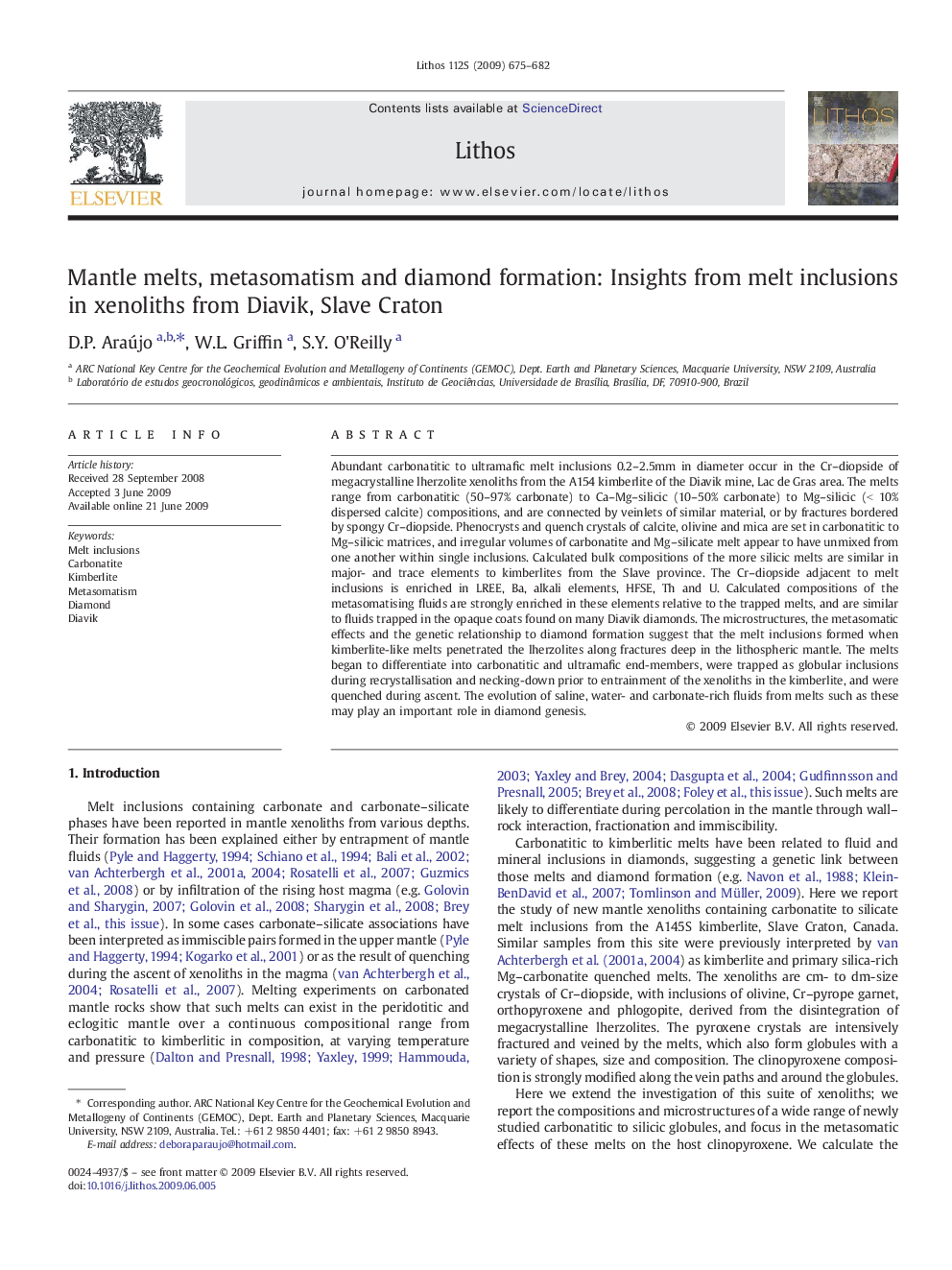| کد مقاله | کد نشریه | سال انتشار | مقاله انگلیسی | نسخه تمام متن |
|---|---|---|---|---|
| 4717179 | 1354428 | 2009 | 8 صفحه PDF | دانلود رایگان |

Abundant carbonatitic to ultramafic melt inclusions 0.2–2.5mm in diameter occur in the Cr–diopside of megacrystalline lherzolite xenoliths from the A154 kimberlite of the Diavik mine, Lac de Gras area. The melts range from carbonatitic (50–97% carbonate) to Ca–Mg–silicic (10–50% carbonate) to Mg–silicic (< 10% dispersed calcite) compositions, and are connected by veinlets of similar material, or by fractures bordered by spongy Cr–diopside. Phenocrysts and quench crystals of calcite, olivine and mica are set in carbonatitic to Mg–silicic matrices, and irregular volumes of carbonatite and Mg–silicate melt appear to have unmixed from one another within single inclusions. Calculated bulk compositions of the more silicic melts are similar in major- and trace elements to kimberlites from the Slave province. The Cr–diopside adjacent to melt inclusions is enriched in LREE, Ba, alkali elements, HFSE, Th and U. Calculated compositions of the metasomatising fluids are strongly enriched in these elements relative to the trapped melts, and are similar to fluids trapped in the opaque coats found on many Diavik diamonds. The microstructures, the metasomatic effects and the genetic relationship to diamond formation suggest that the melt inclusions formed when kimberlite-like melts penetrated the lherzolites along fractures deep in the lithospheric mantle. The melts began to differentiate into carbonatitic and ultramafic end-members, were trapped as globular inclusions during recrystallisation and necking-down prior to entrainment of the xenoliths in the kimberlite, and were quenched during ascent. The evolution of saline, water- and carbonate-rich fluids from melts such as these may play an important role in diamond genesis.
Journal: Lithos - Volume 112, Supplement 2, November 2009, Pages 675–682